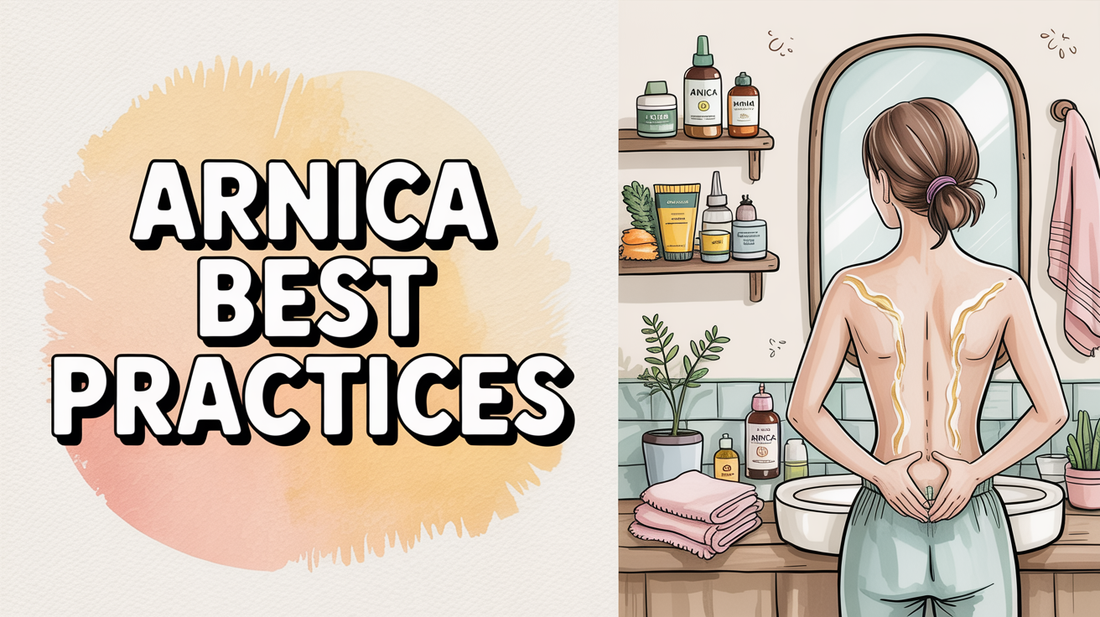Can you apply too much arnica?
Understanding how to use arnica safely is essential for anyone looking to enhance their skincare routine. While arnica may provide benefits, there can be concerns about too much arnica leading to side effects. In this post, we’ll explore the risks of overuse and symptoms to watch for, along with safe skincare use tips. You’ll find clear sections based on current research, helping you make informed choices tonight.
Risks of Overuse
Using arnica excessively can potentially lead to skin irritation and other complications. While arnica is generally safe for topical use, applying it too much or in high concentrations may not be ideal. For instance, overusing arnica might lead to skin sensitization, resulting in allergic reactions or contact dermatitis. This is particularly true with repeated application.
Additionally, prolonged use of arnica may cause skin thinning and increased sensitivity. Applying undiluted arnica could also lead to chemical burns or severe irritation. Surprisingly, overuse may even have the opposite effect of what is desired, worsening inflammation instead of alleviating it. It's vital to avoid applying arnica on broken skin or open wounds, as this can increase absorption and lead to potential toxicity.
- Skin sensitization and allergic reactions can occur with repeated use.
- Excessive application may result in increased skin sensitivity.
- Undiluted arnica can lead to chemical burns.
- Overapplication may worsen inflammation.
- Avoid using on broken skin to reduce absorption risks.
Try It Tonight: Eye & Skin Refresh ✨
- Remove makeup and cleanse gently with lukewarm water.
- Apply a cool compress or take a few deep breaths to relax facial tension.
- Lightly dab a pea-sized amount of Jane Vine Arnica Gel under eyes or on areas of concern. Always patch-test first if you’re new to arnica-based skincare.
Symptoms to Watch For
Being aware of the symptoms of arnica overuse is crucial for ensuring safe application. These symptoms often manifest on the skin and can vary from mild irritation to more serious reactions that may require stopping use altogether. Persistent redness, swelling, or a burning sensation at the application site are common warning signs.
Moreover, if you notice a rash, hives, or blistering in areas where you've applied arnica, it’s a clear indicator to reassess your usage. Increased skin sensitivity or pain instead of relief is also a red flag. In some instances, dry, flaky, or peeling skin may worsen with continued use. If arnica is absorbed significantly through broken skin, systemic symptoms like nausea or dizziness can occur.
- Look for persistent redness or swelling at the application site.
- Rashes or hives may indicate irritation.
- Increased sensitivity or pain instead of relief is concerning.
- Dry, flaky skin could worsen with ongoing use.
- Be alert for nausea or dizziness from absorption through damaged skin.
Why We Recommend a Gentle Helper 🌿
Jane Vine Arnica Gel is crafted for quick absorption and a soothing, lightweight feel. It may support a calm routine and help reduce the appearance of puffiness, dark circles, and skin stress over time.
- Fast-absorbing comfort—no greasy residue.
- Gentle, cooling sensation designed for delicate skin.
- Clean, naturally inspired formula with a fresh finish.
Safe Dosage Tips 🔍
Adhering to proper dosage guidelines is key to enjoying the benefits of arnica while minimizing risks. Most commercial arnica preparations are designed for safe topical application when used as directed. It's advisable to apply arnica gel or cream 2-3 times a day, using thin layers to avoid excessive amounts.
Only use diluted preparations, generally 10% concentration or less, instead of concentrated extracts. Continuous use should be limited to 2-3 weeks unless otherwise advised by a healthcare provider. Always conduct a patch test on a small area of skin before first use to check for any potential sensitivities. Avoid applying it to broken skin, open wounds, or mucous membranes unless the product is specifically formulated for such areas.
- Apply arnica gel 2-3 times daily in thin layers.
- Use diluted preparations (10% or less) for safety.
- Limit use to 2-3 weeks unless otherwise instructed.
- Perform a patch test on a small skin area before use.
- Avoid broken skin or open wounds unless specifically designed.

